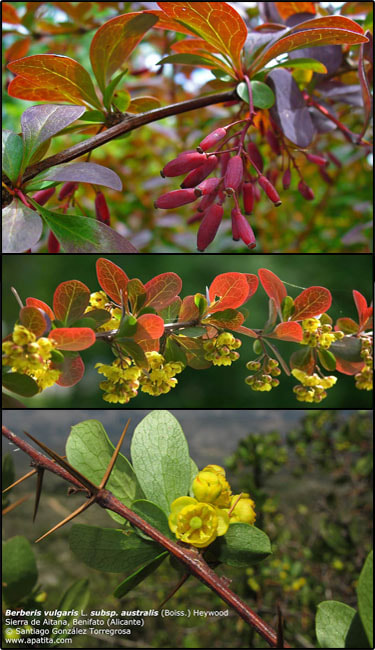|
Japanese barberry (Berberis thunbergii) and Common barberry (Berberis vulgaris)
Why is it a problem? As one of the Top 12 species in the region, Japanese barberry has already been found in natural areas within Benzie, Grand Traverse, Leelanau, and Manistee counties. Deer resistance makes Japanese barberry a great competitor in understories where it forms dense thickets that reduce habitat for birds, butterflies, and other animals. The dense foliage increases humidity levels within the canopy, leading to higher tick populations. As of 2011, northwest lower Michigan has a known risk for Lyme disease, which is transmitted through ticks. If warming treads continue, the prevalence of both Japanese barberry and ticks in our natural areas can be expected to increase without efforts to reduce its planting and to control wild populations. What does Japanese barberry look like? Japanese barberry is a spiny shrub whose arching branches are characterized by green or blue-green, oval or spoon shaped leaves. Popular cultivars have purple or burgundy leaves and may be smaller in size. A single spine will occur at each leaf node while fruits are small, bright red, and typically remain through the winter. How do I manage Japanese barberry? Preventing Japanese barberry from entering our natural areas by planting landscape alternatives is the first step in successful management. While some cultivars produce less seed than the Japanese barberry found wild in natural areas (the “wild type”), these seeds are viable and tend to germinate at a rate similar to the wild type. Additionally, at least 20% of the offspring of the purple and yellow leaved cultivars have been shown to revert in appearance to the green-leaf wild type. Unwanted occurrences in natural areas can be controlled using both mechanical and chemical techniques. Due to their shallow root systems, Japanese barberry can easily be pulled or dug out. For larger shrubs, cut stump treatments work very well. For a full list of characteristics and treatment options visit Michigan.gov/invasivespecies |
| habitatmatters.org |
Contact US231-252-4148
3334 Veterans Drive Unit A Traverse City, Michigan 49685 |
Pleasant Peninsula Design, Habitat Matters 2017



